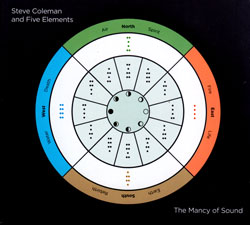
Steve Coleman and Five Elements with Tim Albright, Tyshawn Sorey, Jen Shyu, &c., in an album incorporating the saxophonist's lifetime of researchg into cycles found in nature and astronomy.
In Stock
Quantity in Basket: None
Log In to use our Wish List
Shipping Weight: 4.00 units
EU & UK Customers:
Discogs.com can handle your VAT payments
So please order through Discogs
Sample The Album:
Steve Coleman-alto sax
Jen Shyu-vocals
Jonathan Finlayson-trumpet
Tim Albright-trombone
Thomas Morgan-bass
Tyshawn Sorey-drums
Marcus Gilmore-drums
Ramon Garcia Perez-percussion
Click an artist name above to see in-stock items for that artist.
UPC: B0054QS5TI
Label: Pi Recordings
Catalog ID: PI 38
Squidco Product Code: 14756
Format: CD
Condition: New
Released: 2011
Country: USA
Packaging: Digipack
Recorded at Systems Two, Brooklyn, NY on February 23rd, 2007 and July 25th, 2007 by Joseph Marciano.
"The Mancy of Sound is the follow-up release from influential alto saxophonist and composer Steve Coleman to last year's critically acclaimed Harvesting Semblances and Affinities. That album was a statement of purpose that announced the return of Coleman to popular consciousness. The CD was named by Ben Ratliff in the New York Times as his #1 album of 2010 and was also voted among the top ten releases of 2010 in both the Jazz Times and Village Voice Critics Polls. His performance was thought by many to be the highlight among the almost forty bands that performed at the June 2010 Undead Festival in New York. Of course Coleman has never really been away. Despite not having a well-distributed release in the United States for nine years, he has maintained an active schedule performing internationally. Just as important, his influence on successive generations of jazz musicians continues to grow. Interviewed in The Wall Street Journal, pianist and composer Vijay Iyer said: "It's hard to overstate Steve's influence. He's affected more than one generation, as much as anyone since John Coltrane." You'll find Coleman's mark all over the advances that jazz has made rhythmically since he helped spearhead the M- Base movement some 25 years ago.
The Mancy of Sound finds Coleman at his creative peak, incorporating a lifetime of research into cycles found in nature and astronomy into his musical methods. He had been working on a musical version of this approach for some time, but was able to further develop this concept during his month-long curatorial residency in 2007 at The Stone, the New York performance space. The music on this release as well as on Harvesting is the direct result of those explorations.
The centerpiece of the album is the Odú Ifá Suite, which is made up of the compositions Ogbe, Idi, Iwori and Oyeku, representing Fire, Earth, Air and Water, which are symbolized by the colors red, brown, green and blue, respectively. Ifá refers to a divination and philosophical system of the Yoruba- speaking people of West Africa, which can also be found in the African diasporic cultures of Brazil, Cuba, and Haiti. The dot patterns on the cover of this CD are a traditional Yoruba symbolic codification of the sixteen Odú Ifá. Coleman utilized these patterns, as well as the character of the elements, the directions, and the colors as the foundation of the rhythmic, melodic and harmonic form underlying the four compositions of this suite. For example, the overall rhythmic form of each composition is a direct transcription of the dot patterns and the order in which they occur counter-clockwise in the diagram; and the musical colors of the melodic modes is a reflection of the character of the elements. The Ifá Suite was originally composed for vocalist Cassandra Wilson who first provided Coleman with the idea of composing music inspired by the Odú; Ifá.
Jan 18 and Noctiluca (Jan 11) are based on the eight lunar phases as viewed from a specific place at particular moments. Coleman took the intermediary step of corresponding the eight lunar phases with the eight trigrams of the I-Ching, which symbolized the lunar phases in a form that could be explored musically. This approach is explained in great detail in his article, The Lunation Cycle as a Point of Departure for Musical Ideas in the book Arcana II (HipsRoad / Tzadik Publishing, 2007).
The two treatments of Formation are taken from a movement in a Coleman composition for saxophone and orchestra originally commissioned and performed by the American Composers Orchestra. They masterfully demonstrate Coleman's use of counterpoint in his writing for horns and voice.
This edition of his longtime band, Five Elements, is perhaps his strongest ever. Of particular note are Jonathan Finlayson, who has been with the group for the last eight years and is one of the most highly regarded young trumpeters in jazz, playing on such critically acclaimed albums as Steve Lehman's Travail, Transformation, and Flow and Mary Halvorson's Saturn Sings; and Jen Shyu, whose vocals - with its precise and beautifully nuanced articulation and rhythmic precision - Coleman employs as an equal part in the horn section. Completely defying the traditional role of jazz singing, Shyu's passionate vocals bring an emotional element to this complex and cutting-edge music while pushing the possibilities of jazz singing into new territory. She will be featured on Pi Recordings' next release, Synastry, a duo with bassist Mark Dresser. They are backed by two drummers, a configuration unusual in jazz: Tyshawn Sorey and Marcus Gilmore, both considered the state-of-the-art. For Coleman the idea was to achieve with trap drummers in the jazz tradition what he has previously only experienced playing with the Cuban folkloric drumming troupe AfroCuba de Matanzas; something that he describes as a "multi- directional rhythmic sound," where propulsion is generated in several directions at once, with each drummer's individual parts interlocked in overlapping rhythmic cycles while providing one cohesive sound. The band is joined by Ramón García Pérez on percussion whose chants in Lucumi, a Cuban variant of the Yoruba language, are related to the Orishas that each song in the Ifá Suite is dedicated to. Vijay Iyer also said about Coleman: "What sits behind his influence is this global perspective on music and life. He has a point of view of what he does and why he does it.... He deserves to be placed in the pantheon of pioneering artists." The Mancy of Sound reveals in Coleman an uncompromising artist devoted to the continued expansion of jazz's breadth of view."-Pi Recordings
Artist Biographies
• Show Bio for Steve Coleman "Steve began playing music just days before his 14th birthday as a freshman at South Shore High School on the south side of Chicago. His first instrument was violin but later that year he switched to the alto saxophone. For three years Steve studied the basics of music and saxophone technique, then he decided that he wanted to learn how to improvise. Looking for the best improvising musicians to listen to is what brought Steve to the music of Charlie Parker, although it helped that his father listened to Parker all the time. After spending two years at Illinois Wesleyan University Steve transferred to Roosevelt University (Chicago Music College) in downtown Chicago in order to concentrate on Chicago's musical nightlife. Specifically Coleman had been introduced to the improvisations of Chicago premier saxophonists Von Freeman, Bunky Green, Gido Sinclair, Sonny Greer and others and he wanted to hang out and learn from these veterans. By the time he left Chicago in May 1978, he was holding down a decent gig leading a band at the New Apartment Lounge, writing music, playing Parker classics, and getting increasingly dissatisfied with what he felt was a creative dead end in the Chicago scene. After hearing groups from New York led by masters like Max Roach, Art Blakey, Woody Shaw, The Thad Jones-Mel Lewis Orchestra, Sonny Rollins, etc. come through Chicago with bands that featured great players with advanced musical conceptions, Steve knew where he wanted to go next. He felt he needed to be around this kind of atmosphere in order to grow musically. Hitchhiking to New York and staying at a YMCA in Manhattan for a few months, he scuffled until he picked up a gig with the Thad Jones-Mel Lewis Big Band, which led to stints with the Sam Rivers Big Band, Cecil Taylor's Big Band and others. Soon he began cutting records as a sideman with those leaders as well as pivotal figures like David Murray, Doug Hammond, Dave Holland, Mike Brecker and Abbey Lincoln. However it was really the influence of Von Freeman and Bunky Green in Chicago, Thad Jones, Sam Rivers, Doug Hammond in New York and listening to recordings of past improvising masters and music from West Africa that got Coleman turned around musically. . The most important influences on his music during this time were listening to tenor saxophonist Von Freeman (who primarily influenced Coleman as an improviser), saxophonist Sam Rivers (who influenced Steve compositionally) and drummer/composer Doug Hammond (who was especially important in Steve's conceptual thinking). Even playing with these masters only went part of the way toward paying the rent, and so for the next four years Coleman spent a good deal of time playing in New York City's streets for small amounts of money with a street band that he put together with trumpeter Graham Haynes, the group that would evolve into the ensemble Steve Coleman and Five Elements. It is this group that would serve as the flagship ensemble for most of Steve's activities. Within a short time the group began finding a niche in tiny, out-of-the-way clubs in Harlem and Brooklyn where they continued to hone their developing concept of improvisation within nested looping structures. These were ideas based on how to create music from one's experiences, which became the foundation which Coleman and friends call the M-Base concept. However, unlike what most critics wrote this concept was philosophical, Coleman did not call the music itself M-Base. After reaching an agreement with the West German JMT label in 1985, Steve and his colleagues got their chance to document their emergent ideas on three early Coleman-led recordings like Motherland Pulse, On The Edge Of Tomorrow, and World Expansion. The late 1980s found Coleman working to codify his early ideas using the group Steve Coleman and Five Elements and working with a collective of musicians called the M-Base Collective. As his ideas grew Steve also learned to incorporate various forms of research to expand his awareness, these techniques included learning to program computers to be used as tools to further develop his conception. He developed computer software that he referred to as The Improviser, which was able to spontaneously develop improvisations, harmonic structures and drum rhythms using artificial intelligence based on certain musical theories that Steve had developed over the years. It was also during this time that Coleman came into contact with the study of the philosophy of ancient cultures. This began in the late 1970s with his listening to music from West Africa and studying about he African Diaspora, but in the 1980s Steve began to study and read about the ideas behind the music. He began to see that there was a sensibility that connected what he was interested in today with the ancient cultures of the past. All of these ideas are documented on his recordings in the form of a sonic symbolic language. These emerging concepts were documented on Steve's subsequent albums Sine Die (recorded 1987-88 on the Pangaea Label), Rhythm People (1990), Black Science (1990), Drop Kick (1992), The Tao of Mad Phat (1993), and the first album of the entire M-Base Collective called Anatomy of a Groove (1991-1992); all except Sine Die on BMG Records. These recordings were the beginning of what Steve considers to be the transition to his mature period (1987-1990). However, not being satisfied with reading and listening to recordings, Coleman embarked on the first of many research trips, first going to Ghana in December 1993 to January 1994 to study the relationship of language to music. One of the places that he traveled to was a small village called Yendi to check out the Dagbon people who have a tradition of speaking through their music using a drum language that still survives today. Steve had certain ideas about the role of music and the transmission of information in ancient times and he wanted to verify his speculations. This trip had a profound effect on Coleman's music and philosophy. Upon returning to the United States Steve recorded Def Trance Beat and A Tale of 3 Cities on BMG Records, however the impact of the ideas that he was introduced to in Ghana would not be fully expressed in his work until late in 1994 after meeting the Kemetic (i.e. related to ancient Egypt) philosopher Thomas Goodwin, whose influence on Steve's work was profound and far reaching. In June 1994 Steve formed the group Renegade Way, at that time consisting of Steve Coleman and Greg Osby on alto saxophones, Joe Lovano and Craig Handy on tenor saxophones, Kenny Davis on bass and Yoron Israel on drums. This group also did its first tour of Europe in late august 1995 (with Bunky Green on alto taking Greg's place and Ralph Peterson on drums instead of Yoron). A later version of this group consisted of Steve Coleman and Greg Osby on alto saxophones, Gary Thomas and Ravi Coltrane on tenor saxophones, Anthony Tidd on Bass and Sean Rickman on drums, however this group has never recorded a commercially released CD. Representing both a summation of the previous period and the beginning of another phase is the three CD box set entitled Steve Coleman's Music - Live at the Hot Brass released by BMG France. Each CD in the box set was recorded live in March 1995 in Paris and features one of Coleman's groups, Curves of Life by Steve Coleman and Five Elements, The Way of the Cipher by Steve Coleman and Metrics and Myths, Modes and Means by Steve Coleman and The Mystic Rhythm Society. This last CD was directly influenced by the trip to Ghana, which together with philosophical studies with Thomas Goodwin, occupied Steve's investigations for the remainder of the 1990s. Together with an experimental ensemble put together called Steve Coleman and The Secret Doctrine, that brought the total number of group projects that Steve was involved in to five. The year 1995 was an important year for Steve. He began by organizing a trip that would make a profound impact on his music. While pursuing his philosophical studies and learning more about the transmission of these ideas through music, Steve began to plan to investigate an idea that he had been thinking about for at least 7 years. In an effort to follow the development of certain philosophical and spiritual ideas obtained by studying ancient cultures (primarily ancient Egypt) and following up on the 1993-94 research trip to Ghana, Africa, Steve wanted to meet and collaborate in a creative way with musicians who were involved in certain ancient philosophical/musical traditions which come out of West Africa. One of his main interests was the Yoruba tradition (predominantly out of western Nigeria), which is one of the Ancient African Religions underlying Santeria (Cuba and Puerto Rico), Candomblé (Bahia, Brazil) and Vodun (Haiti). Steve decided to go to these places and investigate the method by which the ideas of these traditions were transmitted through music. First stop, Cuba! In Cuba Steve found that the situation was more complex than he had imagined for the people had preserved more than one African culture and these were mixed together under the general title of Santeria. There are the Abakua societies (Ngbe), the various Arara cults (Dahomey), the Congo traditions such as nganga, mayombe and palo monte as well as the Yoruba traditions. But he did find one group called AfroCuba de Matanzas who specialized in preserving all of the above traditions as well as various styles of Rumba. It was to the town of Matanzas that Steve headed in January of 1996 in order to study the music and also contact AfroCuba de Matanzas and arrange a meeting with the leader of this group, Francisco Zamora Chirino (otherwise known as Minini). Minini was also excited about the project and so it was arranged that the collaboration would take place in February during the time of the Havana Jazz Festival in order to give the expanded group a chance to perform before the Cuban public. In February of 1996 Steve rented a large house in Havana and along with a group of 10 musicians and dancers, a three-person film crew and the group AfroCuba de Matanzas (who had been bused in from Matanzas) the collaboration was started. For 12 days the two groups hung out together, worked, practiced and conceptualized in order to realize their goal. After their performance at the Havana Jazz Festival the musicians went into a Egrem Studios in Havana and recorded the collaboration. The results of this effort are preserved on a recording made for the BMG France recording company called The Sign and The Seal by Steve Coleman and The Mystic Rhythm Society in collaboration with AfroCuba de Matanzas. Although this project went well, Coleman viewed the results as he did every other project he has been involved in, as a step along a certain path. It did demonstrate another step in the evolution of his music, but it is being on the path that is important to Steve. It also shows that there is a more obvious connection than is generally thought between the creative music of today and the dynamic musical traditions of African peoples living in various parts of the earth. The combined group of Steve Coleman and The Mystic Rhythm Society in collaboration with AfroCuba de Matanzas did a major tour of Europe in June-July of 1997. This year also saw Steve form a large group (big band) called Steve Coleman and The Council of Balance. This group recorded a CD called Genesis which was released as part of the two CD set released by BMG France called Genesis and The Opening of The Way (the second CD in the set featuring Steve Coleman and Five Elements). 1997-1999 saw a continuation of the projects involving cultural exchange with musicians around the world. Partially funded by a grant from Arts International (1997), Steve took a group of musicians from America and Cuba to Senegal to collaborate and participate in musical and cultural exchanges with the musicians of the local Senegalese group Sing Sing Rhythm. Using his own funds he also led his group Five Elements to the south of India in January-February of 1998 to participate in a cultural exchange with different musicians in the Carnatic music tradition. Steve and his group also gave workshops in the Brahavadhi Center headed by the renowned musicologist Dr. K. Subramanian. What Steve learned on the trip to India (along with a research trip to Egypt the preceding month) helped to substantiate the knowledge of the ancient systems that Steve had been studying. These trips were helpful in supplying the additional information necessary for Steve to continue his studies, which he hopes to express through his own music. Two of Steve's Five Elements recordings released by BMG France, The Sonic Language of Myth (1999) and The Ascension to Light (2000) are a direct result of these studies. This work came to the attention of IRCAM (the world renown computer-music research center in Paris France) leading to Coleman receiving a major commission from IRCAM to further develop his ideas, in the form of interactive computer software, at the IRCAM facilities in Paris with the aid of programmers Sukandar Kartadinata, Takahiko Suzuki, Gilbert Nouno and IRCAM technology. A premier concert in June 1999 featuring Steve Coleman and Five Elements interacting with what Steve calls his Rameses 2000 computer software program was the public result of this commission. In 2000-2001 Steve withdrew from performing/recording and began study sabbatical. During this time he traveled extensively to India, Indonesia, Cuba and Brazil and continued much of his research as a music professor at the University of California at Berkeley and at CNMAT (the Center for New Music and Technology). He also overhauled his business organization and signed with another record company from France called Label Bleu. After returning to the world of performing Coleman recorded a live double-CD set called Resistance Is Futile (2001) on Label Bleu records. In 2002 Steve Coleman and Five Elements recorded a CD that is available free of charge on Steve's website (www.m-base.com) called Alternate Dimension Series I. Also recorded in this year is the On The Rising Of The 64 Paths on Label Bleu records. Lucidarium was recorded in 2003 (also on Label Bleu records). For this CD Steve and his group explore the dimensions of an alternate tonal and rhythmic system, continuing the spirit of research and experimentation that marks all of his projects. Weaving Symbolics, recorded in 2005, similarly explores the world of form. Much of the important segments of this activity from January 1996 on have been preserved in the form of a documentary film shot by Eve-Marie Breglia based on Steve's music and the theme of cultural transference tentatively entitled Elements on One scheduled for release in 2004-05. 2006-2007 saw a flurry of activity, with Steve releasing his first solo saxophone recording called Invisible Paths (on the Tzadik label). Also recorded during this time were Harvesting Semblances and Affinities and The Mancy of Sound, but these recordings were not released until 2010 and 2011 respectively, after Steve had made a distribution deal with Pi Recordings. All three of these recordings are connected conceptually in that they deal with both an expanded tonal and orchestration conception. This also coincided with Steve's 2006 meeting with the great Danish composer Per Nørgård, who has had some influence on Steve's orchestration concepts. In 2012 Steve altered his approach to being creating completely spontaneous compositions, and later orchestrating them. Functional Arrhythmias was the first recording to use this approach, which involved spontaneously composing in a near-trance state. This was also first recording to be based on the cyclical movements within the human body, a idea that was influenced by Steve's meeting and conversations with percussionist, polymath and modern shaman Milford Graves in 2011. While on a study sabbatical in 2013, Steve received a vision in a half-waking state, and began work on a 2-year project that culminated in the 2014 large ensemble recording entitled Synovial Joints (released April 28 2015). This was a continuation of the spontaneous composition approach, but further developed with much more orchestration of musical colors involved. A further development of this approach resulted in the 2017 recording Morphogenesis, by Steve's latest ensemble; Steve Coleman's Natal Eclipse. Scheduled for a release in the near future is an upcoming recording of Steve Coleman and Five Elements, recorded live at the Village Vanguard in May of 2017. Steve does not think of these concepts, groups, projects and recordings as separate events, but as one connected learning experience. Since 1994 Steve has done a series of performance and educational residencies around the United States and in many other countries (Cuba, India, Ivory Coast, Senegal, Brazil, France) through his non-profit, M-Base Concepts, Inc. This non-profit also has a an online music community website; m-base.net, which promotes educational activities through various multimedia formats and interactive media events." ^ Hide Bio for Steve Coleman • Show Bio for Jen Shyu "Jen Shyu ("Shyu" pronounced "Shoe" in English, Chinese name: 徐秋雁, Pinyin: Xúqiūyàn) is a groundbreaking, multilingual vocalist, composer, producer, multi-instrumentalist, dancer, 2016 Doris Duke Artist, and was voted 2017 Downbeat Critics Poll Rising Star Female Vocalist. Born in Peoria, Illinois, to Taiwanese and East Timorese immigrant parents, Shyu is widely regarded for her virtuosic singing and riveting stage presence, carving out her own beyond-category space in the art world. She has performed with saxophonist and 2014 MacArthur Fellow Steve Coleman since 2003 and has collaborated with such musical innovators as Nicole Mitchell, Anthony Braxton, Wadada Leo Smith, Vijay Iyer, Bobby Previte, Chris Potter, Michael Formanek and David Binney. Shyu has performed her own music on prestigious world stages such as Carnegie Hall, Lincoln Center, Brooklyn Academy of Music, the Metropolitan Museum of Art, Rubin Museum of Art, Ringling International Arts Festival, Asia Society, Roulette, Blue Note, Bimhuis, Salihara Theater, National Gugak Center, National Theater of Korea and at festivals worldwide. A Stanford University graduate in opera with classical violin and ballet training, Shyu had already won many piano competitions and performed the Tchaikovsky Piano Concerto (3rd mvmt.) with the Peoria Symphony Orchestra by the age of 13. She has studied traditional music and dance in Cuba, Taiwan, Brazil, China, South Korea, East Timor and Indonesia, conducting extensive research which culminated in her 2014 stage production Solo Rites: Seven Breaths, directed by renowned Indonesian filmmaker Garin Nugroho. Shyu has won commissions and support from Doris Duke Performing Artist Awards, MAP Fund, Jerome Foundation, Chamber Music America's New Jazz Works, New Music USA, Jazz Gallery, and Roulette, as well as fellowships from the Fulbright Scholar Program, Civitella Ranieri Foundation, Asian Cultural Council, Hermitage Artist Retreat, Yaddo, MacDowell Colony, Korean Ministry of Foreign Affairs and Korean Ministry of Sports, Culture, and Tourism. Shyu has produced seven albums as a leader, including the first female-led and vocalist-led album Pi Recordings has released, Synastry (Pi 2011), with co-bandleader and bassist Mark Dresser. Her critically acclaimed Sounds and Cries of the World (Pi 2015) landed on many best-of-2015 lists, including those of The New York Times, The Nation, and NPR. Her latest album Song of Silver Geese (Pi 2017) is receiving rave reviews and was also included on The New York Times' Best Albums of 2017. Even with the acclaim she has received for her recordings, Shyu is just as renowned for her dynamic performances. Ben Ratliff wrote in The New York Times that her concerts are "the most arresting performances I've seen over the past five years. It's not just the meticulous preparation of the work and the range of its reference, but its flexibility: She seems open, instinctual, almost fearless." Her duo performance with Tyshawn Sorey was among The New York Times' Best Live Jazz Performances of 2017. Larry Blumenfeld wrote in the Wall Street Journal that "her voice, a wonder of technical control and unrestrained emotion, tells a story dotted with well-researched facts and wild poetic allusions. She claims both as her truths." Currently based in New York City, Shyu premiered her latest solo work Nine Doors at National Sawdust June 29, 2017, kicking off a 50-state U.S. tour of "Songs of Our World Now / Songs Everyone Writes Now (SOWN/SEWN)," planting seeds of creativity and threading communities together through art." ^ Hide Bio for Jen Shyu • Show Bio for Jonathan Finlayson "Jonathan Finlayson has been recognized by the New York Times as "...an incisive and often surprising trumpeter," who is "...fascinated with composition." Born in 1982 in Berkeley, CA, Finlayson began playing the trumpet at the age of ten in the Oakland public school system. He came under the tutelage of Bay Area legend Robert Porter, a veteran trumpeter from the bebop era who took Finlayson under his wing; he was often seen accompanying Porter on his gigs about town and sitting in on the popular Sunday nights jam session at the Bird Cage. He subsequently attended the New School for Jazz and Contemporary Music where he studied with Eddie Henderson, Jimmy Owens and Cecil Bridgewater. Finlayson is a disciple of the saxophonist/composer/conceptualist Steve Coleman, having joined his band Five Elements in 2000 at the age of 18. He is widely admired for his ability to tackle cutting-edge musical concepts with aplomb. Finlayson has performed and recorded in groups led by Steve Lehman, Mary Halvorson, Craig Taborn, Henry Threadgill and played alongside notables such as Von Freeman, Jason Moran, Dafnis Prieto and Vijay Iyer." ^ Hide Bio for Jonathan Finlayson • Show Bio for Thomas Morgan "Thomas Morgan (born 14 August 1981 in Hayward, California) is an American jazz musician (upright bass, cello) in contemporary jazz. Morgan began playing the cello 7 years of age, before switching to upright-bass at 14. In 2003 he received his bachelor's degree in Music from the Manhattan School of Music, where he studied with Harvie Swartz and Garry Diall. He also took lessons with Ray Brown and Peter Herbert. Morgan worked with David Binney, Steve Coleman, Joey Baron, Josh Roseman, Brad Shepik, Steve Cardenas, Timuin ahin, Kenny Wollesen, Gerald Cleaver, Adam Rogers and Kenny Werner throughout his career. He is also cooperating with Jakob Bro, Dan Tepfer, Jim Black, John Abercrombie, Masabumi Kikuchi and the Sylvie Courvoisier-Mark Feldman Quartet. Morgan lead his own trio." ^ Hide Bio for Thomas Morgan • Show Bio for Tyshawn Sorey "Tyshawn Sorey (born July 8, 1980 in Newark, New Jersey) is an American musician and composer who plays drum set, percussion, trombone and piano. Since graduating from William Paterson University, Sorey has been a sought-after musician in many different musical idioms. He is both a performer and composer, and has had works reviewed in The Wire, The New York Times, The Village Voice, Modern Drummer and Down Beat. In August 2009, Sorey was given the opportunity to curate a month of performances at the Stone, a New York performance space owned by John Zorn. He was selected as an Other Minds 17 (2012). Sorey recently completed a Master of Arts in composition at Wesleyan University in Middletown, Connecticut. In the fall of 2011, he began pursuing doctoral work in composition at Columbia University. To date, Sorey has released four albums as a leader: That/Not (2007, Firehouse 12 Records), Koan (2009, 482 Music), Oblique (2011, Pi Recordings) and Alloy (2014, Pi Recordings). He has recorded or performed with musicians including Wadada Leo Smith, Steve Coleman, Anthony Braxton, John Zorn, Steve Lehman, Joey Baron, Muhal Richard Abrams, Pete Robbins, Vijay Iyer, Dave Douglas, Butch Morris and Sylvie Courvoisier, among many others." ^ Hide Bio for Tyshawn Sorey • Show Bio for Marcus Gilmore "Marcus Gilmore (born October 10, 1986) is an American drummer. In 2009, New York Times critic Ben Ratliff included Gilmore in his list of drummers who are "finding new ways to look at the drum set, and at jazz itself", saying, "he created that pleasant citywide buzz when someone new and special blows through New York clubs and jam sessions".. Marcus Gilmore is the grandson of Roy Haynes, who gave him his first drum kit at the age of ten, and the nephew of Graham Haynes. A graduate of the Fiorello H. LaGuardia High School of Music & Art and Performing Arts, Marcus also received full ride scholarships to the Juilliard School of Music and Manhattan School of Music. He has been touring professionally since the age of sixteen. Marcus has performed with some of today's best known contemporary jazz artists, including Chick Corea, Gonzalo Rubalcaba, Nicholas Payton, Steve Coleman, Vijay Iyer, and Ambrose Akinmusire. He is also embarking on solo projects with his bands "Actions Speak" and "Silhouwav." He has been named a protégé of the 2018 Rolex Mentors And Protégé project. In August 2020, Gilmore contributed to the live streamed recording of the singer Bilal's EP VOYAGE-19, created remotely during the COVID-19 lockdowns. It was released the following month with proceeds from its sales going to participating musicians in financial hardship from the lockdown. [...] Like his grandfather, Gilmore draws upon a wide variety of influences from Tony Williams to free jazz drummer Milford Graves. When talking about Graves in Modern Drummer, he said "A lot of Milford's playing deals with rhythm, but not in a very metric way-it's non-metric, a lot of waves. It's still melodic, even more so because it's very linguistic. Milford doesn't even really play snares. He keeps the snares off. His drumming sounds very melodic and very lyrical. It sounds like a language." He has specifically cited Elvin Jones on the album Speak No Evil and Tony Williams' Lifetime as influences." ^ Hide Bio for Marcus Gilmore
11/18/2024
Have a better biography or biography source? Please Contact Us so that we can update this biography.
11/18/2024
Have a better biography or biography source? Please Contact Us so that we can update this biography.
11/18/2024
Have a better biography or biography source? Please Contact Us so that we can update this biography.
11/18/2024
Have a better biography or biography source? Please Contact Us so that we can update this biography.
11/18/2024
Have a better biography or biography source? Please Contact Us so that we can update this biography.
11/18/2024
Have a better biography or biography source? Please Contact Us so that we can update this biography.
Track Listing:
1. Jan 18 6:41
2. Formation 1 7:05
3. Fire-Ogbe (Odú Ifá Suite) 5:21
4. Earth-Idi (Odú Ifá Suite) 6:15
5. Air-Iwori (Odú Ifá Suite) 6:36
6. Water-Oyeku (Odú Ifá Suite) 7:59
7. Formation 2 6:56
8. Noctiluca (Jan 11) 12:20
Improvised Music
Jazz
Pi Records
NY Downtown & Jazz/Improv
Octet Recordings
Instant Rewards
Search for other titles on the label:
Pi Recordings.





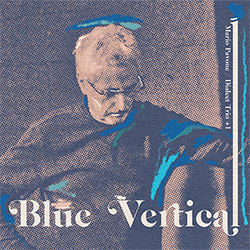



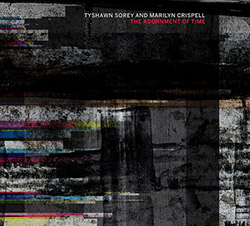








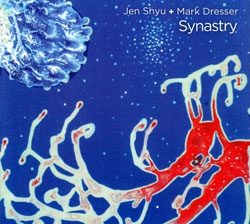
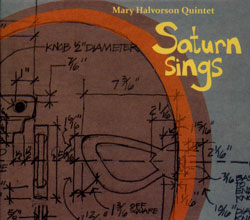
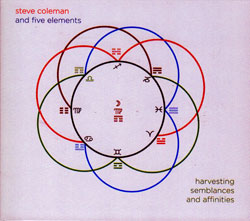
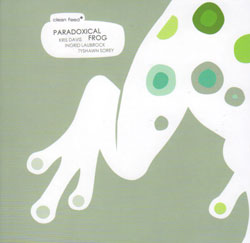
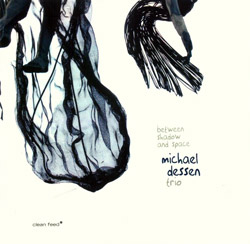

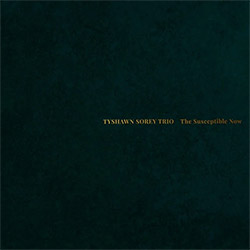
















![Barker / Parker / Irabagon: Bakunawa [VINYL]](https://www.teuthida.com/productImages/misc4/35533.jpg)
![Blaser, Samuel / Marc Ducret / Peter Bruun: Dark Was The Night, Cold Was The Ground [VINYL 10-inch]](https://www.teuthida.com/productImages/misc4/35492.jpg)










![Warren, Kenny (Warren / Hoffman / Ellman): Sweet World [VINYL]](https://www.teuthida.com/productImages/misc4/35451.jpg)


![Blake, Ran / Dave Knife Fabris: Live Amsterdam 2006, First Visit [CD + POSTCARDS]](https://www.teuthida.com/productImages/misc4/35275.jpg)
![Sanna, Claudio: Compositori Sardi Contemporanei II [2 CDs]](https://www.teuthida.com/productImages/misc4/35317.jpg)












![Nevai, Nandor: <<The PRICE of FRONTIER>> Book 1: FULK [BOOK + 4 CDs]](https://www.teuthida.com/productImages/misc4/35464.jpg)
![Nevai, Nandor: <<The PRICE of FRONTIER>> Book 2: MARTIAL [BOOK + 4 CDs]](https://www.teuthida.com/productImages/misc4/35465.jpg)
![Nevai, Nandor: <<The PRICE of FRONTIER>> Book 3: JASSOM [BOOK + 4 CDs]](https://www.teuthida.com/productImages/misc4/35466.jpg)
![Nevai, Nandor: <<The PRICE of FRONTIER>> Book 4: HARD-WON [BOOK + 4 CDs]](https://www.teuthida.com/productImages/misc4/35467.jpg)

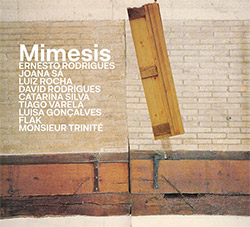




![DNS: Taking Big Bites Of The Khandas Three Cafes Deep [2 CDs]](https://www.teuthida.com/productImages/misc4/35334.jpg)




![Cleaver, Gerald: The Process [VINYL]](https://www.teuthida.com/productImages/misc4/34966.jpg)




![Alva Noto: HYbr:ID II [VINYL 2 LPs]](https://www.teuthida.com/productImages/misc4/35201.jpg)

![Baron, Derek / Luke Martin: Distinct and Concealed [CASSETTE + DOWNLOAD]](https://www.teuthida.com/productImages/misc4/35079.jpg)

![Lyle, Erica Dawn : Colonial Motels [CASSETTE + DOWNLOAD]](https://www.teuthida.com/productImages/misc4/35080.jpg)







![Alva Noto: HYbr:ID III [VINYL 2 LPs]](https://www.teuthida.com/productImages/misc4/35011.jpg)
![Kubisch, Christina / Trondheim Voices: Stromsanger 2022 For Six Voices And Electromagnetic Waves [VINYL]](https://www.teuthida.com/productImages/misc4/34628.jpg)








![Zurria, Manuel: Fame di Vento [3 CDs]](https://www.teuthida.com/productImages/misc4/35167.jpg)

![Granberg, Magnus / Nattens Inbrott / Skogen: Holde Traume, Kehret Wieder! [2 CDs]](https://www.teuthida.com/productImages/misc4/35038.jpg)
![Frey, Jurg: Outermost Melodie [2 CDs]](https://www.teuthida.com/productImages/misc4/35039.jpg)

![Pavone, Jessica: Reverse Bloom [VINYL]](https://www.teuthida.com/productImages/misc4/34895.jpg)




![Modney (Modney / Wooley / Gentile / Roberts / Pluta / Symthe / ...): Ascending Primes [2 CDs]](https://www.teuthida.com/productImages/misc4/34852.jpg)








![Elephant9 with Terje Rypdal: Catching Fire [VINYL 2 LPs]](https://www.teuthida.com/productImages/misc4/35355.jpg)
![Deerlady (Obomsawin, Mali / Magdalena Abrego): Greatest Hits [VINYL]](https://www.teuthida.com/productImages/misc4/34876.jpg)




![Haino, Keiji: Black Blues [2 CDs]](https://www.teuthida.com/productImages/misc4/35109.jpg)



![Surplus 1980: Illusion of Consistency [CD]](https://www.teuthida.com/productImages/misc4/35069.jpg)
![Staiano, Moe: Away Towards the Light [VINYL + DOWNLOAD]](https://www.teuthida.com/productImages/misc4/35037.jpg)
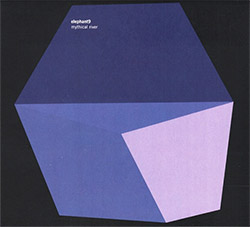



![Caveira (Gomes / Sousa / Abras / Ferrandini): Ficar Vivo [VINYL]](https://www.teuthida.com/productImages/misc4/34643.jpg)
![Gregg, J. J. / David Van Auken: Lunar Prairie [CD w/ DOWNLOAD]](https://www.teuthida.com/productImages/misc4/34611.jpg)

![Coultrain: Mundus [VINYL]](https://www.teuthida.com/productImages/misc4/32439.jpg)
![Mattin: Songbook #6 [VINYL]](https://www.teuthida.com/productImages/misc4/27317.jpg)
![Punkappella: Wake Up [7-inch VINYL]](https://www.teuthida.com/productImages/misc4/17519.jpg)
![Residents, The: WARNING: UNiNC.: Live And Experimental Recordings 1971-1972 [VINYL 2 LPs]](https://www.teuthida.com/productImages/misc4/31521.jpg)
![Coultrain: Phantasmagoria [VINYL]](https://www.teuthida.com/productImages/misc4/30142.jpg)
![Lennon, Sean Ono: Asterisms [VINYL]](https://www.teuthida.com/productImages/misc4/34517.jpg)

![Rotem Geffen: The Night Is The Night [VINYL]](https://www.teuthida.com/productImages/misc4/34631.jpg)
![Coley, Byron: Dating Tips for Touring Bands [VINYL]](https://www.teuthida.com/productImages/misc4/17906.jpg)

![Lost Kisses: My Life is Sad & Funny [DVD]](https://www.teuthida.com/productImages/misc4/lostKissesDVD.jpg)